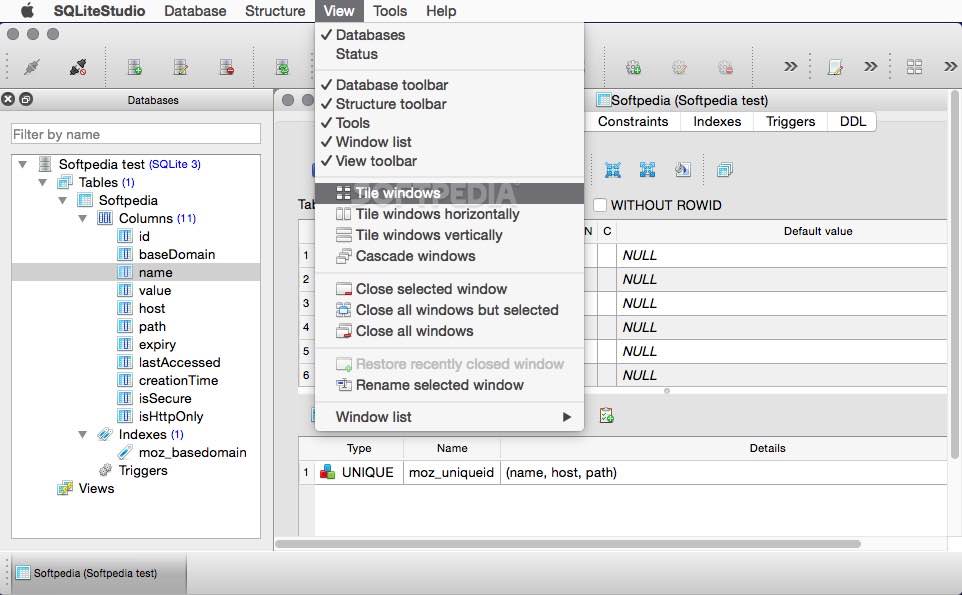
You don’t need to append a semicolon to dot-commands like you do with SQL statements. These are interpreted by the command-line utility and not by SQLite itself. This support is embedded in the file, meaning that any programming language that can use an SQLite file can also use SQL to work with it. Not only does an SQLite database file contain the data, but it also has a standardized way to interact with the data. databases command is known as a “dot-command”. An SQLite database provides support for interacting with the data table using SQL. You can also navigate to the file using your computer’s file system. databases command to check that the database was created.databases For example: sqlite3 /Users/Shared/Pets.db Check that the Database was Created
Create sqlite database using sqlitestudio full#
You can also use the full path to specify a database in another folder. If it had already existed the file would have been opened. That creates a new database file in the current directory called Pets.db. So in my case, I can open the Terminal on my Mac and enter the following command: sqlite3 Pets.db

If such a file exists, it will be opened, if not, a new database file will be created with that name.

When you connect to SQLite, you have the option of providing a database file name. When you create a database with SQLite however, you do so by simply providing a filename. Most of the popular relational database management systems such as MySQL, SQL Server, PostgreSQL, and so on, use the CREATE DATABASE statement to create a database. SQLite uses a different syntax for creating databases to what many other relational database management systems use.


 0 kommentar(er)
0 kommentar(er)
